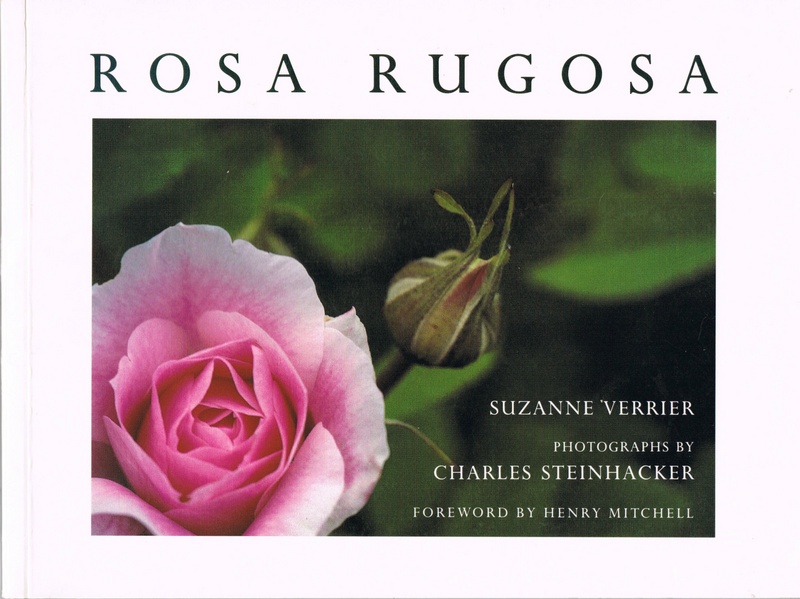
Photo courtesy of Jay-Jay
Book published 11 Jun 1993 by Capability's Books, Inc.
ISBN: 0913643076.
17 favorite votes. Average rating:
GOOD+.
Suzanne Verrier says, "Ask the impossible and the answer is: grow rugosas." Verrier, a native of Maine, as well as a nursery person and garden designer, has for a long time sought to popularize rugosas, especially because of their hardiness and disease resistance. In Rosa Rugosa, she presents a collection of rugosas and rugosa hybrids, their history and their impact on rose breeders both of the past and of the present.
R. rugosa was cultivated in the Far East for a thousand years before the rest of the world became aware of it. When rugosas were finally brought to Europe, they were criticized for their coarseness and lack of refinement. A hundred years passed before major breeding with rugosas began. Around the turn of the century, new rugosa hybrids were developed in France and Germany and North America. Breeders crossed R. rugosa with just about every variety of rose available. Unfortunately, many of the results of these crosses are lost. Later crosses, however, have survived and are well known to the modern gardener. Wilhelm Kordes' R. kordesii, one of the most important parents of hardy roses, was derived from rugosa stock. Felicitas Svedja relies heavily on rugosas to develop the Canadian Explorer series. Even David Austin has used rugosa roses in the development of his English Roses.
The first part of the book lists rugosas roses that are available today. Verrier calls this section, "Rugosas for the Home Gardener." For every rose listed, there is a description and, in most cases, a photograph of the bloom.
Verrier prefaces her chapter on the cultivation of rugosas by advising the reader to take her advice "with a grain of salt." She hesitates to lay down too many hard and fast rules. Her advice has a strong measure of common sense in it. Because every garden is different, Verrier encourages the reader to build on those methods, of the ones she describes, that produce successful results. She discusses how to amend the soil where the rose will be planted, offers instructions on how to plant container-grown as well as bare-root roses, what types of fertilizers to use and why others shouldn't be used on rugosas, discourages chemical spraying (rugosas don't need it), and encourages organic solutions as necessary. Those roses that are prone to disease problems, like the Grootendorst roses and 'Sir Thomas Lipton', are evicted. Rugosas demand little care. Unlike Hybrid Teas, they don't need to be pruned every spring and they don't require any winter protection either.
Verrier, drawing on her own experience as a garden designer, says that one of the advantages of rugosas is that they lend themselves to many uses. They are especially suitable for difficult sites -- along roadsides or in oceanside plantings, for instance. They can be used as the "bones" of a garden, providing a background or wind protection for other plants. Their long blooming season contributes both color and fragrance long after other roses have faded. She suggests some uses that have been traditionally reserved for other types of plants, such as incorporating rugosas, which "have the bulk and year-round interest necessary to meet the high-performance demands of this site," in foundation planting schemes, along pathways, and as full-sized hedges. Her tips, garnered from her design work, can help the home gardener successfully implement any of these planting ideas.
As popular as rugosa roses are, many older varieties are no longer available. In "Historic Rugosas," Verrier lists and describes those roses that are historically important rugosa hybrids and interesting crosses, but which are no longer available to the home gardener. Jules Gravereaux produced a number of rugosa crosses which he named but which were never even introduced into commerce. In some cases, breeders were looking to combine the hardiness and disease-resistance of the rugosas with the exotic coloration of early hybrid teas, many trying to come up with a yellow rugosa (there are only a few yellow rugosas -- most are in the s